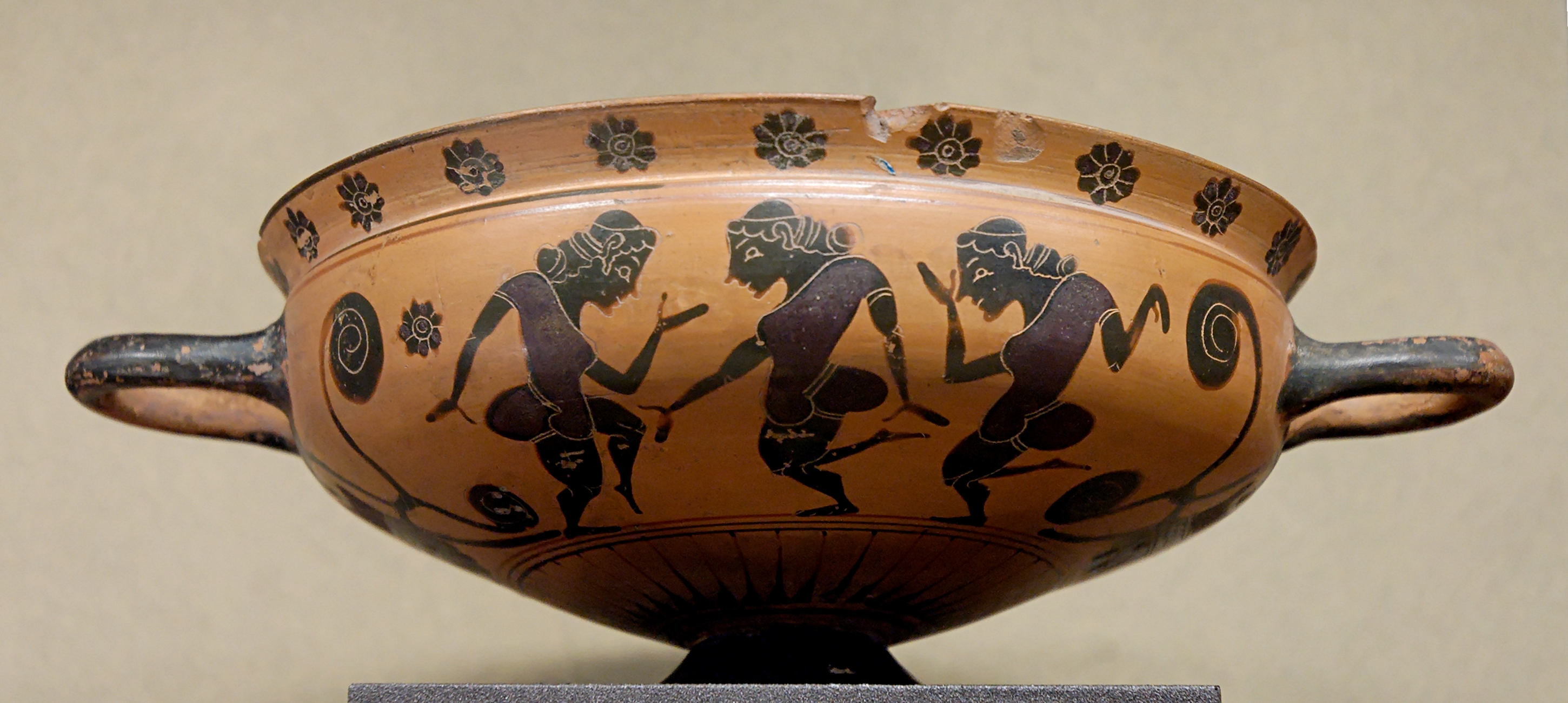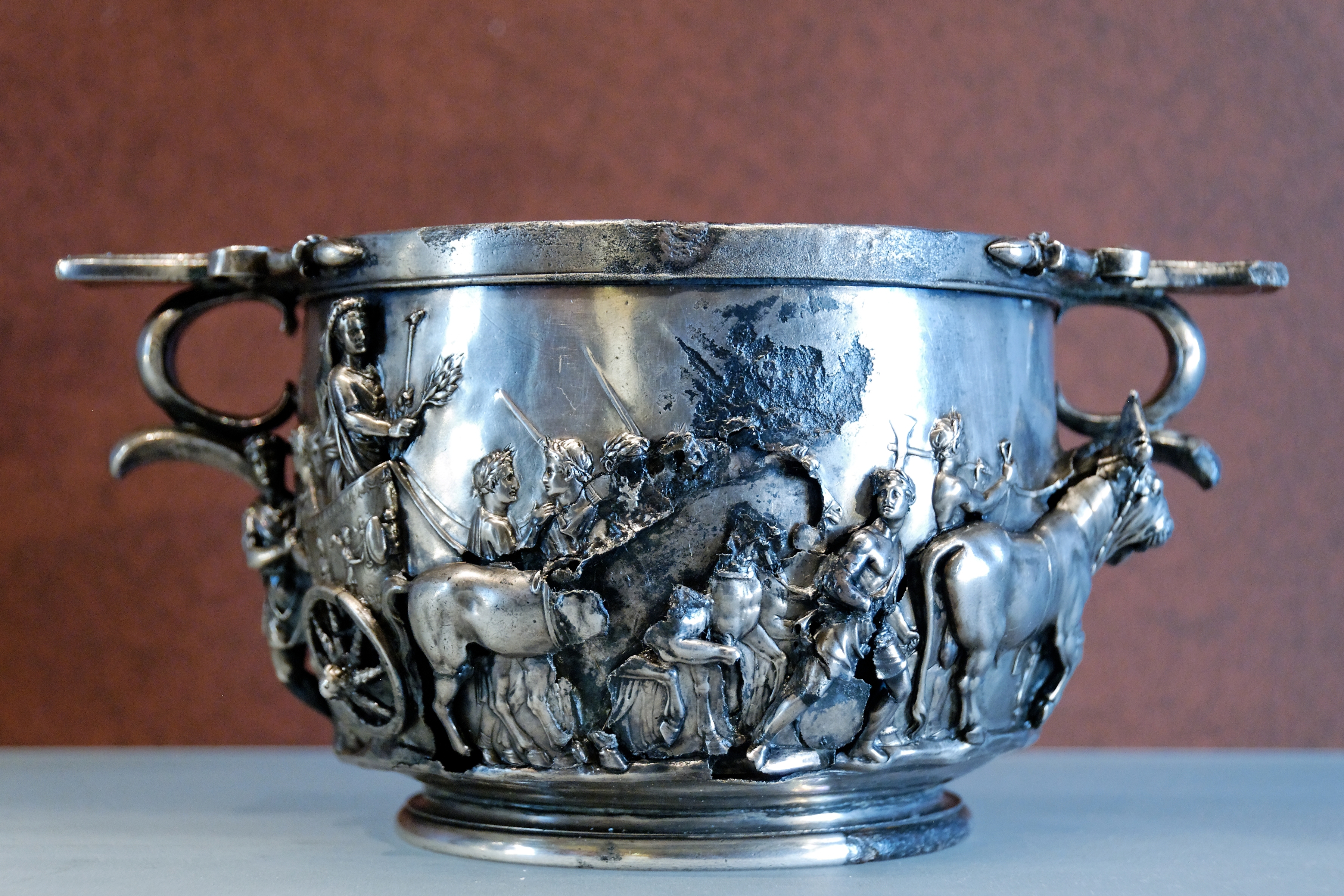|
Oxford Palmette Class
The Oxford Palmette Class is the name given both to a class of ancient Attic kylikes and to the group of vase painters that made them. The Oxford Palmette Class was the last group of artists, or of vases, to precede the Komast cups and Siana cups. They probably developed under East Greek influence out of '' skyphoi''. These pre-Komast cups are larger than earlier cups, and reach about the same size as Komast cups and Siana cups. They feature the first conical cup bases in Attic pottery. The works of the Oxford Palmette Class are dated shortly after 580 BC. Bibliography * Thomas Mannack Thomas Mannack (born in 1958) is a German classical archaeologist. Mannack obtained his Doctorate in 1992 with at the University of Kiel. The thema of his dissertation was ''Beazleys spätere und späteste Manieristen''. He is a specialist in ...: ''Griechische Vasenmalerei. Eine Einführung''. Theiss, Stuttgart 2002, . {{Greek vase painters Ancient Greek vase painters ... [...More Info...] [...Related Items...] OR: [Wikipedia] [Google] [Baidu] |
Attica
Attica ( el, Αττική, Ancient Greek ''Attikḗ'' or , or ), or the Attic Peninsula, is a historical region that encompasses the city of Athens, the capital of Greece and its countryside. It is a peninsula projecting into the Aegean Sea, bordering on Boeotia to the north and Megaris to the west. The southern tip of the peninsula, known as Laurion, was an important mining region. The history of Attica is tightly linked with that of Athens, and specifically the Golden Age of Athens during the classical period. Ancient Attica ( Athens city-state) was divided into demoi or municipalities from the reform of Cleisthenes in 508/7 BC, grouped into three zones: urban (''astu'') in the region of Athens main city and Piraeus (port of Athens), coastal (''paralia'') along the coastline and inland (''mesogeia'') in the interior. The modern administrative region of Attica is more extensive than the historical region and includes Megaris as part of the regional unit West A ... [...More Info...] [...Related Items...] OR: [Wikipedia] [Google] [Baidu] |
Kylix (drinking Cup)
In the pottery of ancient Greece, a kylix ( , ; grc, κύλιξ, pl. κύλικες; also spelled cylix; pl.: kylikes , ) is the most common type of wine-drinking cup. It has a broad, relatively shallow, body raised on a stem from a foot and usually two horizontal handles disposed symmetrically. The main alternative wine-cup shape was the ''kantharos'', with a narrower and deeper cup and high vertical handles. The almost flat interior circle of the base of the cup, called the tondo, was generally the primary surface for painted decoration in the black-figure or red-figure pottery styles of the 6th and 5th century BC, and the outside was also often painted. As the representations would be covered with wine, the scenes would only be revealed in stages as the wine was drained. They were often designed with this in mind, with scenes created so that they would surprise or titillate the drinker as they were revealed. Etymology The word comes from the Greek ''kylix'' ("cup"), ... [...More Info...] [...Related Items...] OR: [Wikipedia] [Google] [Baidu] |
Greek Vase Painting
Ancient Greek pottery, due to its relative durability, comprises a large part of the archaeological record of ancient Greece, and since there is so much of it (over 100,000 painted vases are recorded in the Corpus vasorum antiquorum), it has exerted a disproportionately large influence on our understanding of Greek society. The shards of pots discarded or buried in the 1st millennium BC are still the best guide available to understand the customary life and mind of the ancient Greeks. There were several vessels produced locally for everyday and kitchen use, yet finer pottery from regions such as Attica was imported by other civilizations throughout the Mediterranean, such as the Etruscans in Italy.John H. Oakley (2012). "Greek Art and Architecture, Classical: Classical Greek Pottery," in Neil Asher Silberman et al. (eds), ''The Oxford Companion to Archaeology, Vol 1: Ache-Hoho'', Second Edition, 641–644. Oxford & New York: Oxford University Press. , p. 641. There were a multit ... [...More Info...] [...Related Items...] OR: [Wikipedia] [Google] [Baidu] |
Komast Cup
The Komast cup (also Comast cup) is a cup shape at the beginning of the development of Attic drinking cups. Komast cups were widespread especially in Ionia and Corinth. Like other vase painters of the time, the Attic painters were under strong influence from Corinthian vase painting. The name is derived from the artists’ preferred theme, the ''komos'', a ritualistic drunken procession performed by revelers in ancient Greece, whose participants were known as komasts (κωμασταί, kōmastaí). This is a motif closely connected with Etruscan vase painting. The typical hemispherical shape with an angled "offset" lip and a low foot of only 1–2 cm height was an Attic development. The interior of the cups is black, only a narrow stripe or band below the lip is left in the base clay colour. The foot and the exterior of the handles are also black. The first specimens were quite large, but throughout the period of their production, the cups became gradually smaller. The m ... [...More Info...] [...Related Items...] OR: [Wikipedia] [Google] [Baidu] |
East Greece
East or Orient is one of the four cardinal directions or points of the compass. It is the opposite direction from west and is the direction from which the Sun rises on the Earth. Etymology As in other languages, the word is formed from the fact that east is the direction where the Sun rises: ''east'' comes from Middle English ''est'', from Old English ''ēast'', which itself comes from the Proto-Germanic *''aus-to-'' or *''austra-'' "east, toward the sunrise", from Proto-Indo-European *aus- "to shine," or "dawn", cognate with Old High German ''*ōstar'' "to the east", Latin ''aurora'' 'dawn', and Greek ''ēōs'' 'dawn, east'. Examples of the same formation in other languages include Latin oriens 'east, sunrise' from orior 'to rise, to originate', Greek ανατολή anatolé 'east' from ἀνατέλλω 'to rise' and Hebrew מִזְרָח mizraḥ 'east' from זָרַח zaraḥ 'to rise, to shine'. '' Ēostre'', a Germanic goddess of dawn, might have been a personification ... [...More Info...] [...Related Items...] OR: [Wikipedia] [Google] [Baidu] |
Skyphos
A ''skyphos'' ( grc, σκύφος; plural ''skyphoi'') is a two-handled deep wine-cup on a low flanged base or none. The handles may be horizontal ear-shaped thumbholds that project from the rim (in both Corinthian and Athenian shapes), or they may be loop handles at the rim or that stand away from the lower part of the body. ''Skyphoi'' of the type called '' glaux'' (owl) have one horizontal and one vertical thumbhold handle. Examples Early ''skyphoi'' were made during the Geometric period. Corinth set the conventions that Athens followed. Over a long period the shape remained the same while the style of decoration changed. ''Skyphoi'' were also made of precious metals, generally silver and gold leaf, many examples exist. One possible, well-preserved example is the Warren cup,In his notes, John Pollini states that uncertainty about the correct name of many ancient drinking vessels exists, however he refers to the object with the "established classificatory term scyphus", Speci ... [...More Info...] [...Related Items...] OR: [Wikipedia] [Google] [Baidu] |
Thomas Mannack
Thomas Mannack (born in 1958) is a German classical archaeologist. Mannack obtained his Doctorate in 1992 with at the University of Kiel. The thema of his dissertation was ''Beazleys spätere und späteste Manieristen''. He is a specialist in the field of ancient ceramics. He is in charge of the Beazley Archive database and teaches classical iconography at the University of Oxford , mottoeng = The Lord is my light , established = , endowment = £6.1 billion (including colleges) (2019) , budget = £2.145 billion (2019–20) , chancellor .... Writings * ''The Late Mannerists in Athenian Vase Painting''. Oxford University Press, Oxford 2001 (English version of the dissertation) * ''Griechische Vasenmalerei. Eine Einführung''. [...More Info...] [...Related Items...] OR: [Wikipedia] [Google] [Baidu] |
.jpg)


